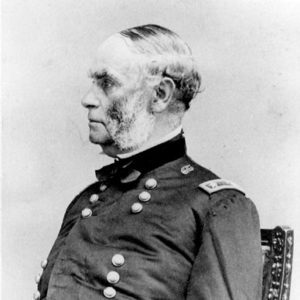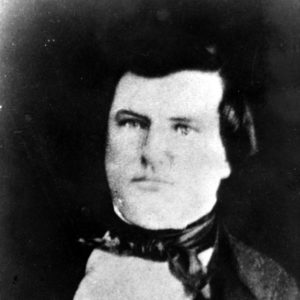calsfoundation@cals.org
Skirmish at Big Indian Creek
aka: Skirmish at Big Creek
aka: Skirmish at Indian Creek
| Location: | Letona (White County) |
| Campaign: | Pea Ridge Campaign |
| Date: | May 27, 1862 |
| Principal Commanders: | Brigadier General Samuel R. Curtis (US); Brigadier General John S. Roane (CS), Major General Thomas C. Hindman (CS) |
| Forces Engaged: | Army of the Southwest (US); Army of the West (CS) |
| Estimated Casualties: | 1(US); 23(CS) |
| Result: | Union victory |
Following victory at the Battle of Pea Ridge, Major General Samuel R. Curtis (US), commander of the Army of the Southwest, received orders on May 2, 1862, to send a portion of his forces to march from Pea Ridge (Benton County) along the White River into northeastern Arkansas and set up headquarters at Batesville (Independence County) and Jacksonport (Jackson County). His orders were to get supplies and advance on to Little Rock (Pulaski County). Curtis gave the Second Division to Brigadier General Eugene A. Carr (US) and the Third Division to Colonel Peter J. Osterhaus (US), who commanded the Seventeenth Missouri Infantry, made up mostly of German immigrants. The April departure of the defeated Major General Earl Van Dorn (CS) and his forces east to the Mississippi River, to assist the Army of the Tennessee at Corinth, left Arkansas without clear military leadership and almost undefended.
The Skirmish at Big Indian Creek, also known as Big Creek or Indian Creek, occurred on May 27, 1862, near the small community of Letona (White County) and close to Mount Pisgah (White County). Modern-day Letona is approximately nine miles northwest of Searcy (White County). Big Indian Creek, as it was known in the nineteenth century, is a tributary to the Little Red River.
Lieutenant Colonel Frederick Lewis (US) and the First Missouri Infantry were escorting a forage train near Big Indian Creek. The Confederates occupied approximately seventeen miles on the Little Red River, including a crossing of the Old Military Road. Confederate accounts of Company A of the Thirty-second Arkansas Infantry Regiment in late May 1862 describe a scouting party of recruits, under Lieutenant James A. Poe, which attacked a Federal foraging party on the Little Red River. At this time, the countryside was overrun by foraging and scouting parties of both armies. The Skirmish at Big Indian Creek, as well as the more significant Action at Whitney’s Lane near Searcy, added to Curtis’s supply problems.
Heavy rains in the area made travel and foraging difficult. In an official report, dated May 28, 1862, Carr wrote to Adjutant General Henry Zarah Curtis, son of Samuel Curtis, that because of the bad crossing at Indian Creek, Lewis had had to detour on his way to Searcy. He wrote, “The wagons and all had plunged through.” Carr further reported that the amount of forage in the immediate vicinity of Searcy had been exaggerated. He wrote, “We have by this raid not made more than two days’ forage, if that much.” He planned to send another expedition out the next day purely for foraging for cavalry but advised that he would not continue to send small parties after that time.
In another official report from Carr to Curtis, the excesses of the raid at Big Indian Creek are described. He wrote that his men were “with the Germans today in foraging, going into private apartments of the ladies and opening trunks and drawers, and ransacking everything and taking away what they wanted. If these excesses are permitted, we cannot wonder at guerrilla warfare.” The men termed “Germans” were the Seventeenth Missouri Infantry, commanded by Osterhaus, himself a German immigrant.
Southern historical accounts elaborate on the guerrilla warfare of the German immigrants in the Federal army in even more critical terms. They are described as bartenders and waiters elevated to high military positions, treated with favoritism, and not held accountable for their lack of restraint and breaches of civilized warfare.
The result of the Skirmish at Big Indian Creek, as noted in the official report of Carr, was that the Rebels were scattered twenty miles up and down the Little Red River and twelve or fifteen miles south. Military losses were minimal. The Confederates killed and captured were one captain, one lieutenant, one orderly sergeant, and about twenty others. The Federal losses were one sergeant, wounded so badly that he was left behind, and one private slightly wounded. In spite of supply shortages and skirmishes with the Confederates, however, the Federal forces sustained control over northeastern Arkansas.
For additional information:
Akridge, Scott H., and Emmett E. Powers. A Severe and Bloody Fight: The Battle of Whitney’s Lane & Military Occupation of White County, Arkansas, May & June, 1862. Searcy, AR: White County Historical Museum, 1996.
Dyer, Frederick H. A Compendium of the War of the Rebellion, vol. 3. New York: Yoseloff, 1900.
Evans, Clement A., ed. Confederate Military History: A Library of Confederate States History Written by Distinguished Men of the South. Atlanta, GA: Confederate Publishing Co., 1899.
Mobley, Freeman K. Making Sense of the Civil War in Batesville–Jacksonport and Northeast Arkansas. Batesville, AR: Frank K. Mobley, 2005.
The War of the Rebellion: A Compilation of the Official Records of the Union and Confederate Armies. Series 1, Vol. 13. Washington DC: Government Printing Office, 1883.
Loretta Haskell
White County Civil War Roundtable
 Civil War Timeline
Civil War Timeline ACWSC Logo
ACWSC Logo  Samuel Curtis
Samuel Curtis  Thomas Hindman
Thomas Hindman  John Roane
John Roane 




Comments
No comments on this entry yet.